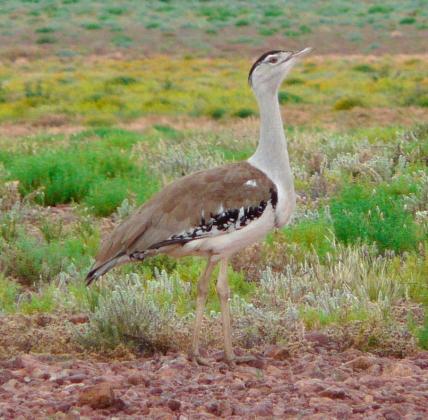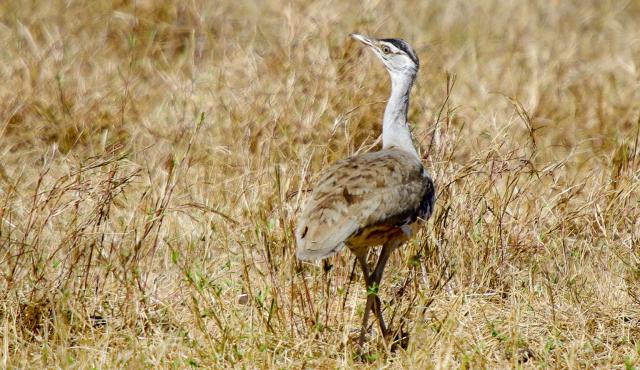A range of teacher professional learning programs will be developed to accompany the Biodiversity of the Western Volcanic Plains online outreach...



Australian Bustard
Ardeotis australis
Breeding season is from August to November. One to two eggs are laid directly on the ground, often in open areas near spinifex grass for the chicks to hide amongst once hatched. Incubation and care of the young is by the female. This species is nomadic.
| Details | Description |
| Type | Bird |
| Group | Bustard |
| Other Common Names | Plains Turkey, Wild Turkey |
| Identifying Characteristics | |
| Distinctive Markings | Bold, black and white markings on the wings. Walks holding the head and neck erect. The male has a black crown with a black breastband. The female has a brown crown and no breastband. The white, feathered breast sac of the male is inflated and swung from side to side in a display to the female during the breeding season. |
| Diet | Omnivore, feeding on leaves, buds, seeds, fruit, frogs, lizards and invertebrates including crickets and grasshoppers, also mice. |
| Habitat | Grassland, spinifex, arid scrubland with saltbush and bluebush. Open, dry woodland of mulga, mallee and heath. |
| Native Status | Native to Australia |
| Sounds | Deep, booming loud calls in the breeding season. Abrupt, hoarse "huhh, huhh, aa - a - r - r - rgh, aa - a - r - r - rgh". |
| Taxonomy | |
| Phylum | Chordata |
| Class | Aves |
| Order | Gruiformes |
| Family | Otididae |
| Genus | Ardeotis |
| Species | australis |

Distribution maps indicate current and historic locations where species have been sighted.
Source: Atlas of Living Australia
| Conservation Status | |
| DEPI Advisory List | Critically endangered |
| FFG Act | Listed as threatened |
| EPBC Act | Not listed |
| FFG Action Statement |
The conservation status of species is listed within Victoria and Australia.
The Department of Environment and Primary Industry (DEPI) Advisory List consists of non-statutory advisory lists of rare or threatened flora and fauna within Victoria.
The Flora and Fauna Guarantee Act 1988 (FFG Act) lists threatened species in Victoria. Under the Act, an Action Statement is produced for each listed species.
The Environment Protection and Biodiversity Conservation Act 1999 (EPBC Act) is the Australian Government’s key piece of environmental legislation, listing nationally threatened native species and ecological communities.



